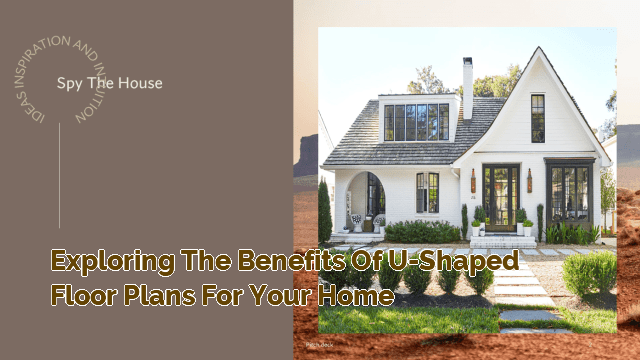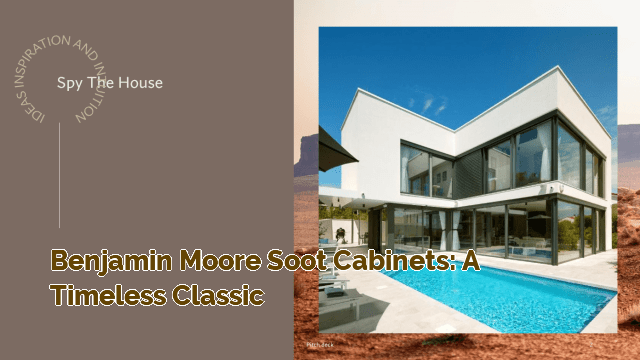Exploring the Benefits of U-Shaped Floor Plans for Your Home
Are you considering building a new home or renovating your current one? If so, you might be wondering what type of floor plan would work best for your family’s needs. While there are many options to choose from, one design that has gained popularity in recent years is the U-shaped floor plan. In this article, we’ll explore the concept of U-shaped floor plans in detail, highlighting their unique benefits and characteristics. We’ll also provide tips on how to make the most of this design style, including considerations for layout, lighting, and decor.
What is a U-Shaped Floor Plan?
A U-shaped floor plan is a type of home layout that involves creating a “U” shape with the living spaces, typically the kitchen, living room, and dining room, situated around a central courtyard or outdoor space. This design style is often chosen for its ability to create a sense of privacy and seclusion while still allowing for ample natural light and ventilation. One of the key benefits of a U-shaped floor plan is its versatility. This design can be adapted to fit a variety of lot sizes and shapes, making it ideal for both urban and suburban environments. Additionally, U-shaped homes can be designed to fit a range of architectural styles, from modern to traditional.
Benefits of a U-Shaped Floor Plan
Wondering why so many homeowners are choosing U-shaped floor plans for their homes? Here are just a few of the key benefits of this design style: 🏡 Increased privacy and security: With the living spaces arranged around a central courtyard, U-shaped homes offer a sense of seclusion and privacy that is hard to achieve with other floor plans. This can be especially beneficial for families with young children or those who value their privacy. 🏡 Ample natural light and ventilation: By opening up the living spaces to a central outdoor area, U-shaped homes allow for maximum natural light and ventilation. This can help to reduce energy costs and create a more comfortable living environment. 🏡 Indoor-outdoor living: U-shaped homes are ideal for those who love to entertain or spend time outdoors. With a central courtyard or outdoor space, homeowners can easily transition between indoor and outdoor living spaces, creating a seamless flow between the two. 🏡 Versatility: Whether you’re looking for a modern, minimalist aesthetic or a traditional, cozy vibe, U-shaped floor plans can be adapted to fit a range of architectural styles and design preferences.
Design Considerations for U-Shaped Homes
While U-shaped floor plans offer many benefits, there are some design considerations to keep in mind when planning your home. Here are a few tips to help you make the most of this design style:
Layout
When designing a U-shaped home, it’s important to consider the layout of the living spaces. Ideally, the kitchen, living room, and dining room should be positioned around a central courtyard or outdoor space, with bedrooms and other private areas situated on one side of the “U”.
Lighting
With a U-shaped floor plan, natural light is key. To maximize the amount of light entering your home, consider installing large windows or sliding doors that open up to the central courtyard. You can also add skylights or light wells to bring in additional natural light.
Decor
When it comes to decorating a U-shaped home, it’s important to create a cohesive look that ties all of the living spaces together. Consider using a consistent color palette or design theme throughout the home, and choose furniture and decor that complements the overall aesthetic.
Outdoor Space
Since U-shaped homes are designed around a central courtyard or outdoor space, it’s important to make the most of this area. Consider adding landscaping, outdoor seating, or even a pool or hot tub to create a relaxing oasis that you can enjoy year-round.
People Also Ask
What are the disadvantages of a U-shaped floor plan?
While U-shaped floor plans offer many benefits, there are some potential downsides to consider. One disadvantage is that U-shaped homes can be more expensive to build than other floor plans, due to the additional exterior walls and roofing required. Additionally, U-shaped homes may not be as efficient in terms of heating and cooling, since the central courtyard can create a drafty or uneven living environment.
What is the difference between a U-shaped and L-shaped floor plan?
While both U-shaped and L-shaped floor plans involve creating a shape with the living spaces, there are some key differences between the two. U-shaped homes typically have a central courtyard or outdoor space, while L-shaped homes do not. Additionally, U-shaped homes are typically more enclosed and private than L-shaped homes, which may have more open living spaces.
What is a courtyard house?
A courtyard house is a type of home design that centers around a central courtyard or outdoor space. This design style has been used for centuries in many different cultures, and is known for its ability to create a sense of privacy and seclusion while still allowing for ample natural light and ventilation. Courtyard homes can take many different forms, from traditional haciendas to modern minimalist designs.
Conclusion
U-shaped floor plans offer a unique combination of privacy, natural light, and indoor-outdoor living that is hard to find with other home designs. Whether you’re building a new home or renovating your current one, a U-shaped floor plan could be the perfect choice for your family’s needs. By considering the layout, lighting, decor, and outdoor space of your home, you can create a beautiful and functional living environment that you’ll love for years to come.






